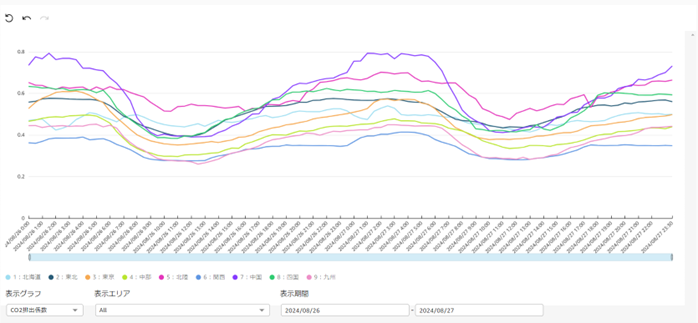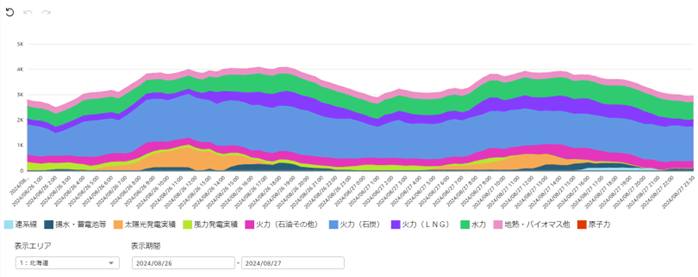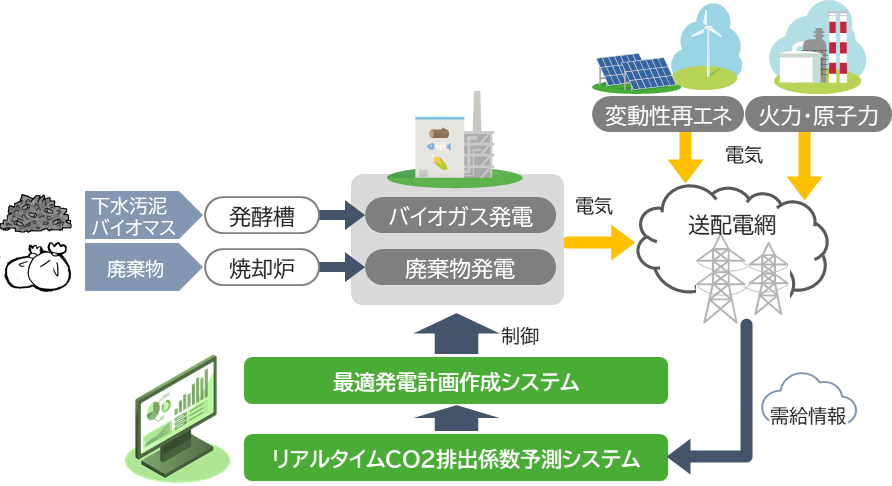CO2 Emission Coefficients by Time of Day Using Publicly Available Information from General Transmission and Distribution Companies Visualization of the Changing Environmental Value of Electricity with the Spread of Renewable Energy -
PACIFIC CONSULTANTS CO., LTD.
Pacific Power Co., Ltd.
PACIFIC CONSULTANTS CO., LTD. (Headquarters: Chiyoda-ku, Tokyo, President and Representative Director: Osamu OMOTO) is pleased to announce that one of its group company, Pacific Power Co., Ltd. (Address: Chiyoda-ku, Tokyo; President and Representative Director: Michiko GOUZU), has been selected as the lead engineer to participate as a joint implementer and have been advancing technological development in the Ministry of the Environment’s FY2022 (JPN) Regional Co-Creation and Cross-Sector Carbon Neutral Technology Development and Demonstration Project (Development and Demonstration Project for Optimal Control Technology for Renewable Energy Power Generation Based on Real-time CO2 Emission Coefficients).
As one of the results of this effort, we are pleased to announce that we have calculated and published the CO2 emission coefficients for electricity by time-of-day using the actual power generation data by fuel type and time of day of each general electricity transmission and distribution company, which began to be made public in April 2024.
Explanation Page of CO2 Emission Coefficients by Time-of-Day
The Significance of CO2 Emission Coefficients by Time-of-Day
Until now, electricity CO2 emission coefficients have mostly been one-year average values, such as coefficients published by retail electricity suppliers based on the Ministry of the Environment's "Greenhouse Gas Emissions Calculation, Reporting, and Publication System (SHK System)," and it has not been possible to grasp changes in CO2 emissions by time-of-day. The publication of CO2 emission coefficients by time-of-day aims to visualize changes in CO2 emission coefficients by time-of-day, which cannot be grasped using the current publication system.
For example, during good weather during the daytime, the amount of electricity generated by solar power generation increases, suppressing the amount of electricity generated by thermal power generation, and it is believed that the CO2 emission coefficient during this time period is lower than at night. During rainy weather or at night, solar power generation cannot be expected, so the proportion of electricity supply that relies on thermal power generation increases. Therefore, the CO2 emission coefficient for each time period was calculated using the actual power generation results for each time period.

Figure: Example of Calculation of CO2 Emission Coefficient by Time-of-Day

Figure: Example of Power Generation Performance by Fuel Type and Time-of-Day
Internationally, discussions are underway to emphasize methods that more precisely reflect the actual situation in the calculation methodology of Scope 2 of the GHG Protocol, which is widely used as the calculation standard for Greenhouse Gas Emissions by business sectors. In order to be prepared to flexibly respond to various future trends, it is important to understand and utilize these time period CO2 emission coefficients.
Use of CO2 Emission Coefficients by Time-of-Day
Until now, power generation and demand have been shifted and optimized by time-of-day in initiatives such as VPP (Virtual Power Plant) and DR (Demand Response) using the economic value of electricity (such as spot market price) that changes by time-of-day as an indicator. However, it has been difficult to clearly show what contribution these have made to the environment. If there is a CO2 emission coefficient by time-of-day, it can be easily shown that simply changing the time-of-day when the same amount of electricity is generated or consumed can lead to CO2 reduction.
*To obtain a more accurate CO2 reduction effect, it is necessary to identify power sources (marginal power sources) whose output increases or decreases due to additional power generation or power saving during each time-of-day, and use theirCO 2 emission coefficients for calculations. Pacific Power plans to calculate and publish the CO2 emission coefficients for marginal power sources by time-of-day in the future.
Specifically, in the Ministry of the Environment's Regional Co-Creation/Cross-Sector Carbon Neutral Technology Development and Demonstration Project, PACIFIC CONSULTANTS GROUP aims to build a system that can quantify and maximize the effect of CO2 reduction by predicting the CO2 emissions by time-of-day from grid power the next day (short term), thereby optimizing the operation and development of renewable energy, grid storage batteries, demand response, etc. In particular, we are developing control technology for digester gas power generation and waste power generation as public sector renewable energy power generation, in which Pacific Power Co., Ltd. has a wealth of experience.

Image of the System to be Developed
The prediction and control system that uses the CO2 emission coefficient calculated this time as an indicator will be provided to the municipal Power Producers and Suppliers (PPS) in which Pacific Power Co., Ltd. is involved, as well as to municipalities and companies aiming to become carbon neutral.
PACIFIC CONSULTANTS CO., LTD. and Pacific Power Co., Ltd. will continue to contribute to the revitalization and development of towns and the progress of carbon neutrality through their local energy business.
Reference: Related academic conference presentations, etc.
- Takeshi MATSUDA, Sakuto HORIO, Michiko GOUZU "Calculation of CO2 emission coefficients by time-of-day considering output fluctuations of renewable energy," 19th Japan Life Cycle Assessment Society Research Presentation (2024)
- Takeshi MATSUDA, Sakuto HORIO, Michiko GOUZU "Estimation and application of real-time CO2 emission coefficients for electricity," the 42nd Research Presentation Meeting of the Japan Society of Energy and Resources (2023)


